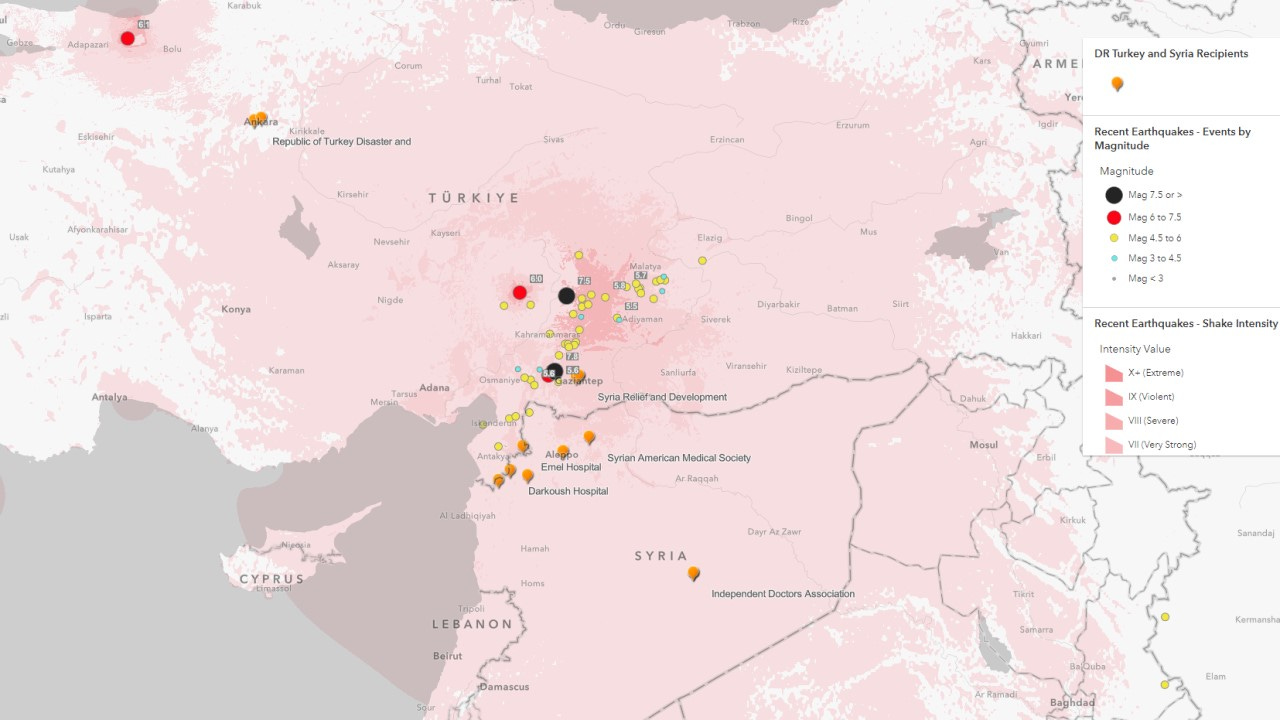

Discover more from Direct Relief | Covering Crisis
Direct Relief Mobilizes Medical Aid, $200,000 Funding to Earthquake Responders in Turkey and Syria
Covering Crisis is Direct Relief’s newsletter for journalists covering public health crises
Within hours of the 7.8-magnitude earthquake that caused widespread damage across Turkey and northern Syria, the Turkish government requested international assistance and Direct Relief began mobilizing its response.
Direct Relief is providing immediate support for search and rescue efforts, committing $100,000 to AKUT, the leading search and rescue team in Turkey with over 400 staff and volunteers. AKUT has deployed its teams to the earthquake zone, and its early reports detail over 1,700 collapsed buildings, no power, and below-freezing temperatures. Southern Turkey is home to 3.6 million Syrian refugees, many of whom live in camps and are vulnerable to the cold.
In Syria, Direct Relief has committed $100,000 to its long-term partner the Syrian American Medical Society (SAMS), which operates health facilities in the northwest of the country. Those facilities have already received over 1,000 patients impacted by the earthquake. The region of Syria hit by the earthquake contains a large population of internally displaced people and refugees at particular risk of impacts from interrupted power, health services, food and water access, and limited shelter.
Direct Relief is initially providing SAMS with 108 emergency medical backpacks stocked with medical supplies for first responders, 1,000 hygiene kits, antibiotics, analgesics, oral rehydration salts, prenatal vitamins, and supplies to assist with wound care and acute injuries. We are also communicating with other long-term Syrian partners about their immediate needs, and have shared our medical inventory list with the Turkish Red Crescent.
Ensuring Efficiency and Avoiding Bottlenecks
Following best practices for responding to major disasters, Direct Relief is mobilizing its medical aid deliveries in coordination with local officials and agencies to ensure efficiency and avoid the bottlenecks that often occur when efforts to bring in personnel and material assistance converge in an area with damaged infrastructure.
In discussions with freight forwarders on Monday, Direct Relief’s transportation team determined that the best option for delivering material aid is to fly it into Istanbul, clear customs there and truck it to the final destination. The Adana airport is operational but is much smaller and is currently getting inundated with relief aid workers and aid moving in from Turkish authorities. It is likely that this airport will quickly become overwhelmed, and the capacity of their customs officials maxed out, causing the backlogs we typically see during this type of response.
Over the next several weeks, the priority will be to bolster the availability of medical items needed to treat traumatic injuries caused by falling debris, crush injuries, fractures, and lacerations, and to support search and rescue activities. A continued flow of primary care items to help people with chronic health conditions will also be necessary, especially while local resources are reallocated for emergency response.
Direct Relief will continue to respond to requests in the region as they become known and will continue posting updates here and more information becomes available: https://www.directrelief.org/emergency/turkey-syria-earthquake/
Injury and Disease Risks From Earthquakes
Earthquakes typically cause blunt trauma and orthopedic injuries, such as broken bones, lacerations, and crush syndrome from being trapped under heavy debris. An overwhelming number of injuries in the initial moments of an emergency can create an acute need for health personnel, medical supplies, blood, and medicines.
In an earthquake’s aftermath, people often become ill due to their lack of shelter, compromised water and sanitation systems, lack of refrigeration, and untreated injuries. These circumstances can lead to bacterial infections and disease outbreaks among people who are forced into temporary shelters. People also frequently lose access to the medicine they need to manage chronic conditions such as diabetes, hypertension, and mental health issues.
Syria is already experiencing a cholera outbreak, a threat often magnified by an earthquake’s destruction. More than 77,000 suspected cholera cases have been reported in Syria since August 25, 2022, including more than 6,500 in camps for internally displaced persons.
Subscribe to Direct Relief | Covering Crisis
Disaster News, Crisis Analysis and Information Resources from Direct Relief




